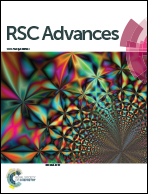VOCC: a database of volatile organic compounds in cancer
Abstract
Volatile organic compounds (VOCs) have become increasingly important in recent years, as they are catalyzing a shift in the cancer diagnosis approach to a non-invasive system. Despite several efforts, non-invasive tests that detect cancer early are not available and hence there is a need to develop new resources that facilitate cancer diagnosis. Therefore, we have developed for the first time a comprehensive literature curated database termed VOCC, which catalogs experimentally identified VOCs that are reported to differentiate cancers from normal samples. The database contains 551 VOCs from 17 different cancers and 10 sample sources. Each record in the database is presented in a compound centric manner and provides information on their name, cancer type, source, structure (2D and 3D), properties (physical, chemical, topological), patient sample information, VOC detection technique, statistical results and accuracy of detection. We have also assembled information about the changes in the concentration level of VOC's (qualitative and quantitative) in cancer compared to normal cells. VOCC covers 17 cancer types in which VOC concentration identified from various sources like blood, breath, and urine has been documented in normal and cancer patients. VOCC can easily be browsed or searched using various options facilitating easy retrieval and dissemination of information. Further to facilitate retrieval of existing data, each record is hyperlinked to other databases like the human metabolome database, ChemSpider and PubChem. It is expected that the availability of this free web-based database will stimulate and enable development of new methodologies as well as understanding what is essential for designing early detection approaches based on VOCs.


 Please wait while we load your content...
Please wait while we load your content...